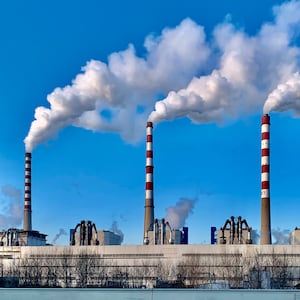Last week’s report from the United Nations’ Intergovernmental Panel on Climate Change contained a dire warning: Radical action is needed to cut worldwide carbon emissions 60 percent by 2035 and avert the worst effects of a climate disaster. The report raised the stakes in the ongoing race to decarbonize the world’s industries, with technologies that can produce energy without releasing carbon dioxide or that can directly remove carbon dioxide from the atmosphere.
It’s clear that a solution to the climate crisis will necessitate combining existing strategies with future ones, including wind and solar energy production with carbon capture techniques. New research from chemical engineers at the Korea Advanced Institute of Science and Technology may result in us adding another tool to our decarbonization arsenal: a microscopic bacterium named Cupriavidus necator that can turn CO2 gas into a biodegradable plastic.
Their work, published on March 27 in the Proceedings of the National Academy of Sciences, shows that with the right setup and ingredients, C. necator can continuously produce a bioplastic from CO2 in the air. If the method is able to be scaled up, such a system could be a two-in-one solution, converting excess CO2 into a biodegradable plastic that obviates the need for energy-inefficiant plastic production.
Over a decade ago, scientists realized that C. necator can ferment a range of carbon sources to produce poly-3-hydroxybutyrate (PHB), a polyester that is biodegradable and compatible with living organisms. But for years, bacterial PHB production could only be batched, since electricity needed at the start of the process and an accumulation of toxic byproducts would kill the bacteria. These factors limited researchers’ ability to scale up C. necator fermentation outside the laboratory.
In the new study, the scientists figured out a workaround. They added a synthetic membrane to their setup that separated the bacteria from the toxic byproducts. On one side of their system, a chemical reaction prepared CO2 gas for fermentation, and the membrane let the ingredients flow to the other side where C. necator transformed them into granules of PHB.
Best of all, the process could operate continuously and independently, with researchers removing PHB-filled bacteria and adding an equal amount of fresh microbes once a day. As a proof of concept, the scientists ran the system continuously for 18 days, finding that it could produce 11.5 mg of PHB every hour—more than 16 times the output of existing systems.
The PHB production process still requires electricity at the beginning to convert the CO2 gas into a product that the bacteria can ferment, but even this step was made more energy efficient. The researchers calculated that the cost for converting carbon dioxide with renewable energy would be 34 cents cheaper per kilogram than purchasing the ingredients.
The researchers wrote in their study that these advances open the door for scaling up bacterial PHB production, something that had not been possible previously. The PHB can be used to replace plastic ubiquity in our world, from food packaging to surgical devices. Taking the IPCC report to heart and overhauling our energy systems sounds radical, and it is. We’ll need all the help we can get—and the tiniest microbes might be able to lend us a hand.








